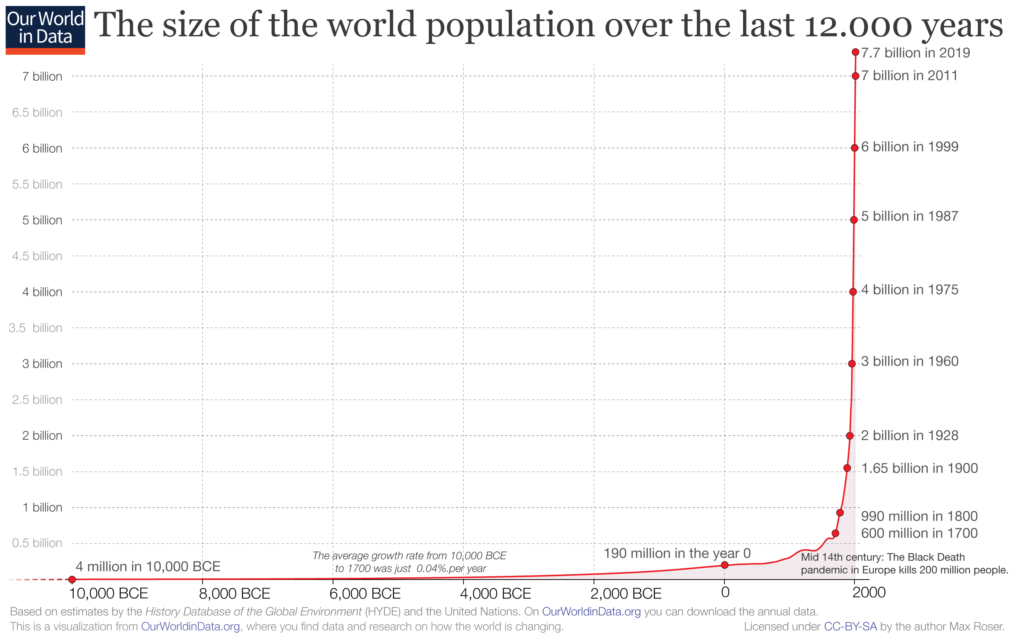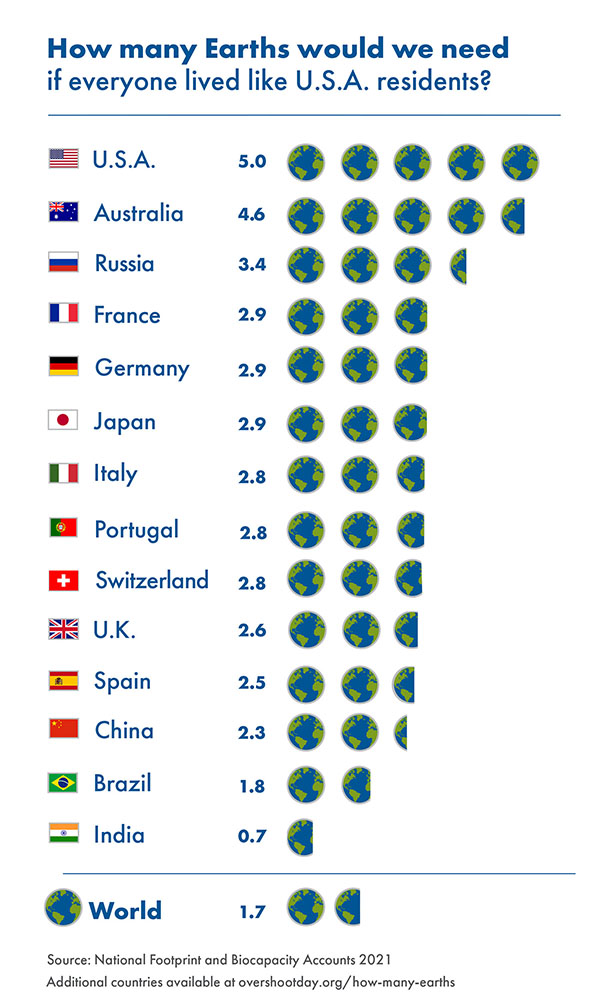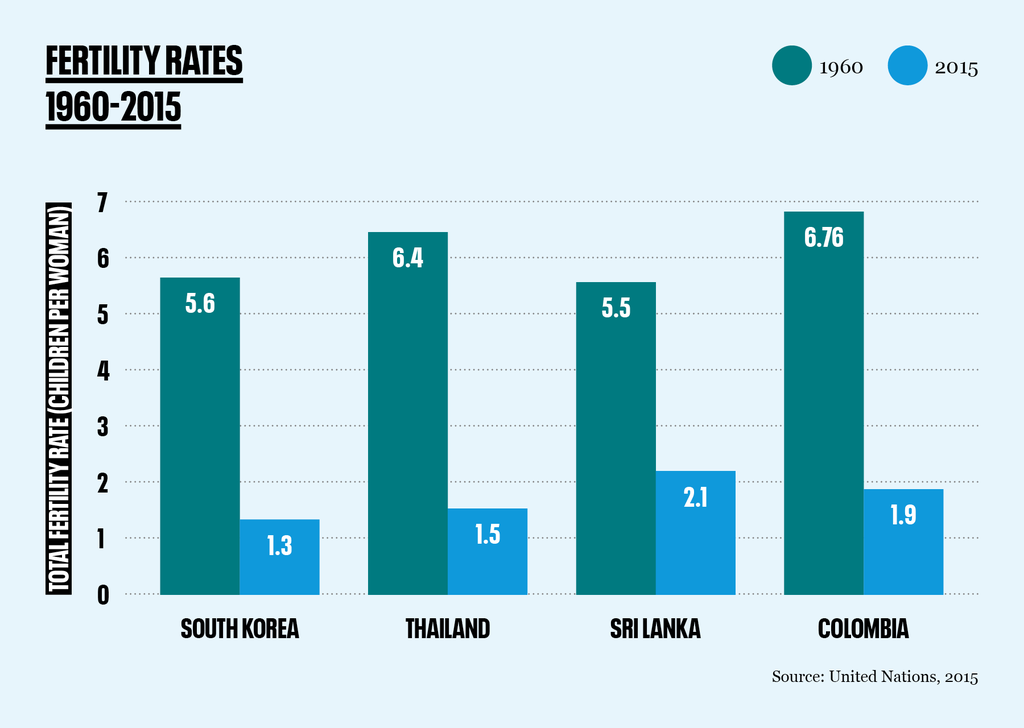How can we ethically reduce the earth’s population?
In the last 2,000 years the human population has increased by 7,510,000,000 (more than seven and a half billion) with the last 100 years (since 1900) seeing an increase of more than six billion people (Figure 1). Rates are starting to slow, but there will still be more than a billion more people in the next decade. Earth systems have limits, many of which are already being stressed due in no small part to an increasing global population. However, increasing population is only one part of the puzzle, we also need to look at consumption.

The size of the world population over the last 12,000 years. Source: Our World in Data.
One way to think about consumption is to consider what you ate today, how often you travelled in a car, and how much stuff you bought. Monitor that every day for an entire year, add it all up, and you get your personal rate of consumption. If you do that for everyone in Australia and divide it by the country’s population, we can get an average consumption rate, also called consumption per capita. Now here is where things get tricky. If all 7.7 billion people on the planet consumed resources at the same rate as Australia, we would need almost five Earths worth of resources. Fortunately, not every country consumes as much as we do, but most countries consume far above the planetary limits, despite all our advances in agriculture, new energy saving technologies, and changes in lifestyles. And collectively, the whole world is already consuming 1.7 Earths, which would only get worse with more people on the planet.

So with the global population still increasing and our consumption rates being wholly unsustainable, what can we do? China, in an attempt to reduce its population, implemented the One Child Policy from 1979-2015, which, while reducing the population, has resulted in a lot of unintended consequences that will cause serious problems in the coming years. Alternatively, countries like Japan, New Zealand, and other high-income countries are having fewer children born every year. But that transition can take a long time and usually requires increasing rates of consumption before getting there. One of the most successful ways to reduce populations is investing resources into female empowerment and pro-active family planning. For example, South Korea saw a major drop in the number of children being born between 1960 and 2015, due in large part to improved women’s rights. While those investments are the most ethical way to reduce the Earth’s population, we need to spend even more time working on ways to reduce our massive consumption rates.












